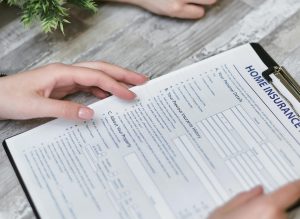Home insurance is a critical safeguard that provides financial protection against unexpected events such as fire, theft, and natural disasters. However, many homeowners are unaware of potential coverage gaps in their policies, leaving them vulnerable to significant financial losses. In this comprehensive guide, we’ll delve into the intricacies of home insurance coverage, identify common gaps that may exist in your policy, and explore strategies for filling those gaps to ensure you have comprehensive protection for your home and belongings.
1. Understanding Coverage Gaps:
Home insurance policies typically consist of several components, including dwelling coverage, personal property coverage, liability protection, and additional living expenses coverage. While these components offer broad protection, there are several common coverage gaps that homeowners should be aware of:
– Lack of Sufficient Dwelling Coverage: Insufficient dwelling coverage limits may leave homeowners unable to rebuild or repair their home to its pre-loss condition in the event of a covered peril.
– Exclusions for Certain Perils: Some home insurance policies may exclude coverage for specific perils, such as floods, earthquakes, or sewer backups, leaving homeowners unprotected against these risks.
– Inadequate Personal Property Coverage: Standard personal property coverage limits may not fully reimburse homeowners for the value of their belongings in the event of a loss.
– Limited Liability Protection: Liability coverage limits may not be sufficient to cover legal expenses and damages resulting from lawsuits brought against homeowners for injuries or property damage occurring on their property.
2. Strategies for Filling Coverage Gaps:
Fortunately, there are several strategies homeowners can employ to fill potential coverage gaps and enhance their home insurance protection:
– Add Endorsements or Riders: Endorsements or riders can be added to a home insurance policy to provide additional coverage for specific perils or higher coverage limits for valuable items such as jewelry, art, or collectibles.
– Purchase Separate Policies: For perils not covered by standard home insurance policies, such as floods or earthquakes, homeowners can purchase separate policies or riders to ensure they are adequately protected.
– Increase Coverage Limits: Reviewing and adjusting coverage limits for dwelling, personal property, and liability protection can help homeowners ensure they have sufficient coverage to meet their needs.
– Consider Umbrella Insurance: Umbrella insurance policies provide additional liability coverage beyond the limits of standard home insurance policies, offering an extra layer of protection against costly lawsuits.
3. Reviewing and Updating Your Policy:
Regularly reviewing and updating your home insurance policy is essential to ensure you have adequate protection against potential risks. Consider the following steps:
– Conduct a Home Inventory: Documenting your belongings and their estimated value can help you determine if you have adequate personal property coverage and identify items that may require additional coverage.
– Work with an Independent Insurance Agent: An independent insurance agent can help you assess your coverage needs, compare quotes from multiple insurers, and find the right policy to fill any coverage gaps.
– Stay Informed: Stay informed about changes in your home’s value, local building costs, and insurance regulations that may affect your coverage needs.
Home insurance is a crucial investment that provides peace of mind and financial protection for homeowners. By understanding potential coverage gaps and implementing strategies to fill them, homeowners can ensure they have comprehensive coverage that adequately protects their home, belongings, and finances against unexpected events. Regularly reviewing and updating your policy with the help of an experienced insurance professional is key to maintaining adequate protection and safeguarding your home and family for the future.





